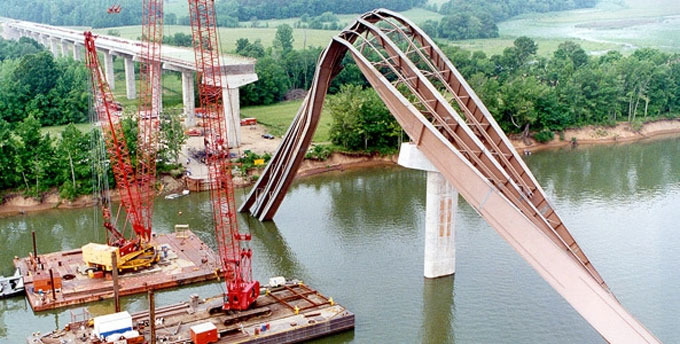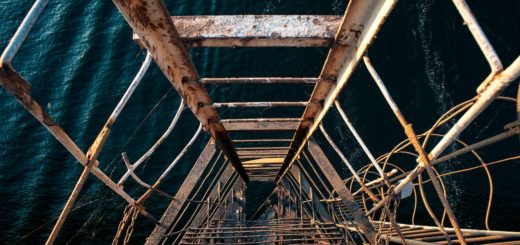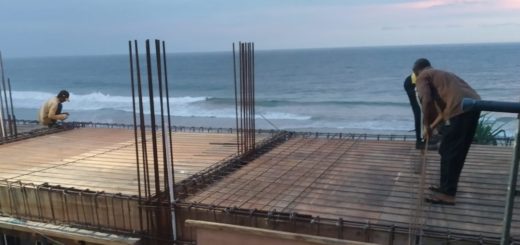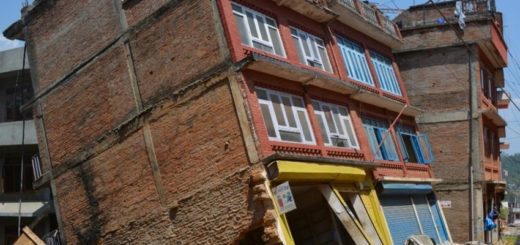Structural Failures: Causes, Impacts, and Prevention
Structural failures can have catastrophic consequences, leading to loss of life, property damage, and economic implications. Understanding the causes, impacts, and prevention of failures is crucial for ensuring the safety and integrity of buildings and infrastructure. In this article, we will explore the common causes of structural failures, examine notable case studies, discuss the impact of such failures, and delve into the preventive measures that can be taken to mitigate these risks.
Structural failures occur when a component or system within a building or infrastructure collapses or fails to perform its intended function. These failures can be attributed to various factors, including design errors, construction defects, material failure, excessive loads, and natural disasters. Addressing structural failures is of paramount importance to protect public safety, maintain the integrity of structures, and prevent potential disasters.
Common Causes of Structural Failures
- Design errors: Flaws in the design phase, such as inadequate calculations or improper structural analysis, can compromise the strength and stability of a structure.
- Construction defects: Poor workmanship, improper installation of components, or the use of substandard materials during construction can weaken the structural integrity of a building.
- Material failure: Failures can occur due to the failure of materials used in construction, including steel, concrete, or timber. Factors like corrosion, fatigue, or manufacturing defects can contribute to material failure.
- Overloading or excessive loads: When structures are subjected to loads beyond their capacity, such as heavy machinery or excessive snow accumulation on roofs, it can lead to stress and failure.
- Natural disasters: Events like earthquakes, hurricanes, floods, or strong winds can cause severe structural damage and lead to failures, especially if the structures are not designed or constructed to withstand such forces.
- Settlement: Settlement occurs when a structure sinks or subsides into the ground unevenly. It can be caused by soil compression, consolidation, or the removal of underlying materials, such as mining activities. Settlement can result in structural damage and uneven floors.
- Delamination: Delamination is a failure mode commonly seen in composite materials, such as laminated composites or concrete overlays. It involves the separation of layers within the material, reducing its strength and integrity.
- Erosion and Scour: Erosion and scour can weaken the foundations of structures, particularly in water environments. It occurs when the soil or sediment around foundation elements is eroded or washed away by moving water, compromising support and stability.
- Chemical Degradation: Chemical degradation, including chemical attacks discussed earlier, can weaken structural materials like concrete, steel, or coatings, reducing their ability to withstand loads and environmental factors.
- Dynamic Loading: Dynamic loads, such as those from earthquakes, wind gusts, or machinery vibrations, can lead to structural failures if the design does not adequately account for these dynamic forces. Buildings, bridges, and other structures need to be designed to resist dynamic loads effectively.
- Creep Rupture: Creep rupture is a failure mode in which materials subjected to high temperatures and sustained loads experience gradual deformation and eventually rupture over time. This is especially relevant in applications involving elevated temperatures, like boilers and pressure vessels.
- Blast and Impact Loading: Explosions or impact events can cause localized or widespread structural damage. Designing structures to withstand blast or impact loading is crucial in high-risk areas, such as military facilities and critical infrastructure.
- Inadequate Maintenance: A lack of proper maintenance can lead to structural deterioration and failure over time. Regular inspections, repairs, and maintenance are essential to prevent structural issues from developing or worsening.
- Human Error: Human errors during construction, alterations, or maintenance can lead to structural failures. Oversight, miscommunication, and negligence can all contribute to structural problems.
Types of Structural Failures
- Foundation Failure: Foundation failures can lead to settlement or differential settlement, where the structure sinks or tilts due to inadequate soil support, soil erosion, or poor foundation design. This type of failure can result in structural instability and damage.
- Cracking: Cracks in concrete or masonry structures can develop for several reasons, including structural movement, thermal expansion and contraction, excessive loading, and chemical attacks. Cracking can compromise the integrity of the structure and allow the ingress of moisture and harmful agents.
- Buckling: Buckling occurs when structural members, such as columns or beams, fail due to excessive axial loads or instability. It often manifests as a sudden, lateral deflection or kinking of the member. Buckling can be caused by insufficient bracing, slender members, or improper design.
- Fatigue Failure: Fatigue failure happens when a structure or component experiences repeated or cyclic loading over time, leading to the gradual development of cracks and, eventually, failure. It is common in bridges, aircraft, and other structures subjected to dynamic loads.
- Corrosion and Rusting: Corrosion of metal components, particularly in marine or corrosive environments, can weaken the structure over time. Rusting of steel reinforcement in concrete can lead to cracking and spalling of the concrete cover, compromising the structural integrity.
- Overloading: Overloading occurs when a structure or component is subjected to loads greater than its design capacity. This can result in deformation, failure, or even collapse. Overloading can be caused by accidents, misjudgment, or changes in usage.
- Vibration-Induced Failure: Excessive vibrations, whether from machinery, wind, or other sources, can lead to fatigue failure or resonance-induced failure. Vibrations can cause damage to structural elements and lead to reduced stability.
- Shear Failure: Shear failure happens when structural members, such as beams or columns, fail due to a combination of shear forces and bending moments. It can result in the sudden tearing or shearing of the material.
- Lateral-Torsional Buckling: Lateral-torsional buckling is a form of structural instability that affects beams and girders. It occurs when a beam twists and bends laterally under a combination of axial and bending loads, leading to a loss of stability.
- Thermal Expansion and Contraction: Extreme temperature fluctuations can lead to thermal stresses in structures, causing cracking and deformation. Bridges, for example, may experience expansion joint failures due to repeated thermal cycles.
- Punching Shear Failure: In reinforced concrete slabs or footings, punching shear failure can occur when the concentrated load at a column or support point exceeds the capacity of the concrete to resist shear forces.
- Torsional Failure: Torsional failure occurs when a structural member fails due to torsional or twisting forces. It can affect components like shafts, beams, or columns that are subjected to twisting moments.
- Creep Deformation: Creep is the slow, time-dependent deformation of materials under a constant load. Over time, it can lead to structural deflection and deformation, especially in concrete and certain metals.
- Material Deficiency: Material-related failures can result from the use of substandard or defective construction materials, leading to reduced strength, durability, or stability.
Case Studies of Notable Structural Failures
- Collapse of the Tacoma Narrows Bridge: The failure of the original Tacoma Narrows Bridge in 1940 due to aeroelastic flutter serves as a cautionary tale of the importance of considering aerodynamic forces in bridge design. The bridge’s innovative design lacked sufficient stiffness, resulting in excessive deflection and ultimately collapse.
- Failure of the Hyatt Regency walkway: In 1981, the collapse of the walkways at the Hyatt Regency hotel in Kansas City resulted in multiple fatalities and injuries. The failure was attributed to a design change that compromised the structural integrity of the walkways, leading to a tragic outcome.
- Collapse of the Morandi Bridge in Genoa: The collapse of the Morandi Bridge in 2018 shocked the world and highlighted the potential consequences of poor maintenance and aging infrastructure. Investigation revealed deficiencies in the bridge’s design, construction, and maintenance practices, emphasizing the need for regular inspections and proactive maintenance.
Prevention and Mitigation of Structural Failures
To prevent and mitigate failures, several measures should be implemented:
- Stringent design and engineering standards: Adhering to robust design standards and codes ensures that structures are designed to withstand anticipated loads and environmental forces.
- Quality control in construction: Implementing rigorous quality control processes during construction helps detect and rectify any deficiencies or errors that may compromise structural integrity.
- Regular inspections and maintenance: Conducting regular inspections and proactive maintenance activities help identify potential issues early on, allowing for timely repairs and preventive measures.
- Advancements in technology and materials: Embracing technological advancements and innovative materials can enhance structural strength, durability, and resilience.
Importance of Structural Failure Investigation and Analysis
Thorough investigation and analysis of structural failures play a crucial role in:
- Identifying root causes: Understanding the underlying reasons for failures helps in addressing specific issues and avoiding similar mistakes in future projects.
- Improving future designs and practices: Lessons learned from structural failures contribute to the development of better design approaches, construction techniques, and maintenance strategies.
- Legal and insurance implications: Investigation reports provide crucial evidence in legal proceedings, insurance claims, and establishing liability.
The Role of Regulations and Standards in Ensuring Structural Safety
Regulations and standards play a vital role in maintaining structural safety. Key aspects include:
- Building codes and regulations: These codes establish minimum safety requirements for the design, construction, and maintenance of structures, ensuring compliance with safety standards.
- Industry standards and guidelines: Various professional organizations develop and publish standards and guidelines that outline best practices and technical requirements for specific construction disciplines.
- Compliance and enforcement: Regulatory bodies enforce codes and standards through inspections, audits, and penalties for non-compliance, promoting accountability and ensuring adherence to safety measures.
Advancements in Structural Engineering to Enhance Safety
Continual advancements in structural engineering contribute to improved safety measures:
- Innovations in building materials: New materials with enhanced strength, durability, and sustainability characteristics are being developed and implemented to increase structural resilience.
- Structural health monitoring systems: Sophisticated monitoring systems are being deployed to continuously assess the structural health of buildings and infrastructure, allowing for early detection of potential issues and timely intervention.
- Computer simulations and modeling: Advanced computer simulations and modeling techniques enable engineers to predict and analyze the behavior of structures under various conditions, aiding in the design process and identifying potential vulnerabilities.
These advancements, coupled with a proactive approach to safety, contribute to the ongoing improvement of structural integrity and the prevention of failures.
Structural failures pose significant risks to human life, property, and the economy. Understanding the causes, impacts, and prevention measures is crucial for ensuring the safety and integrity of our built environment. By implementing stringent design and construction standards, conducting regular inspections and maintenance, and embracing technological advancements, we can minimize the occurrence of structural failures and mitigate their consequences. It is imperative that stakeholders, including designers, engineers, contractors, and regulatory bodies, work collaboratively to prioritize structural safety and prevent future failures.
Related Articles
- 8 Types of Column Failure Methods
- Retaining Wall Failures
- 6 Causes for Beam Failures – A guide for Designers
FAQs
What are the main causes of structural failures?
Structural failures can be caused by design errors, construction defects, material failure, excessive loads, and natural disasters.
How can structural failures be prevented?
Failures can be prevented by adhering to stringent design standards, implementing quality control in construction, conducting regular inspections and maintenance, and utilizing advancements in technology and materials.
What are the consequences of structural failures?
Structural failures can result in loss of life and injuries, property damage, economic implications, and public safety concerns.
Why is it important to investigate structural failures?
Investigating failures helps identify root causes, improve future designs and practices, and determine legal and insurance implications.
How do regulations and standards contribute to structural safety?
Regulations and standards establish minimum safety requirements, provide guidelines and best practices, and ensure compliance and enforcement, thereby promoting structural safety.




